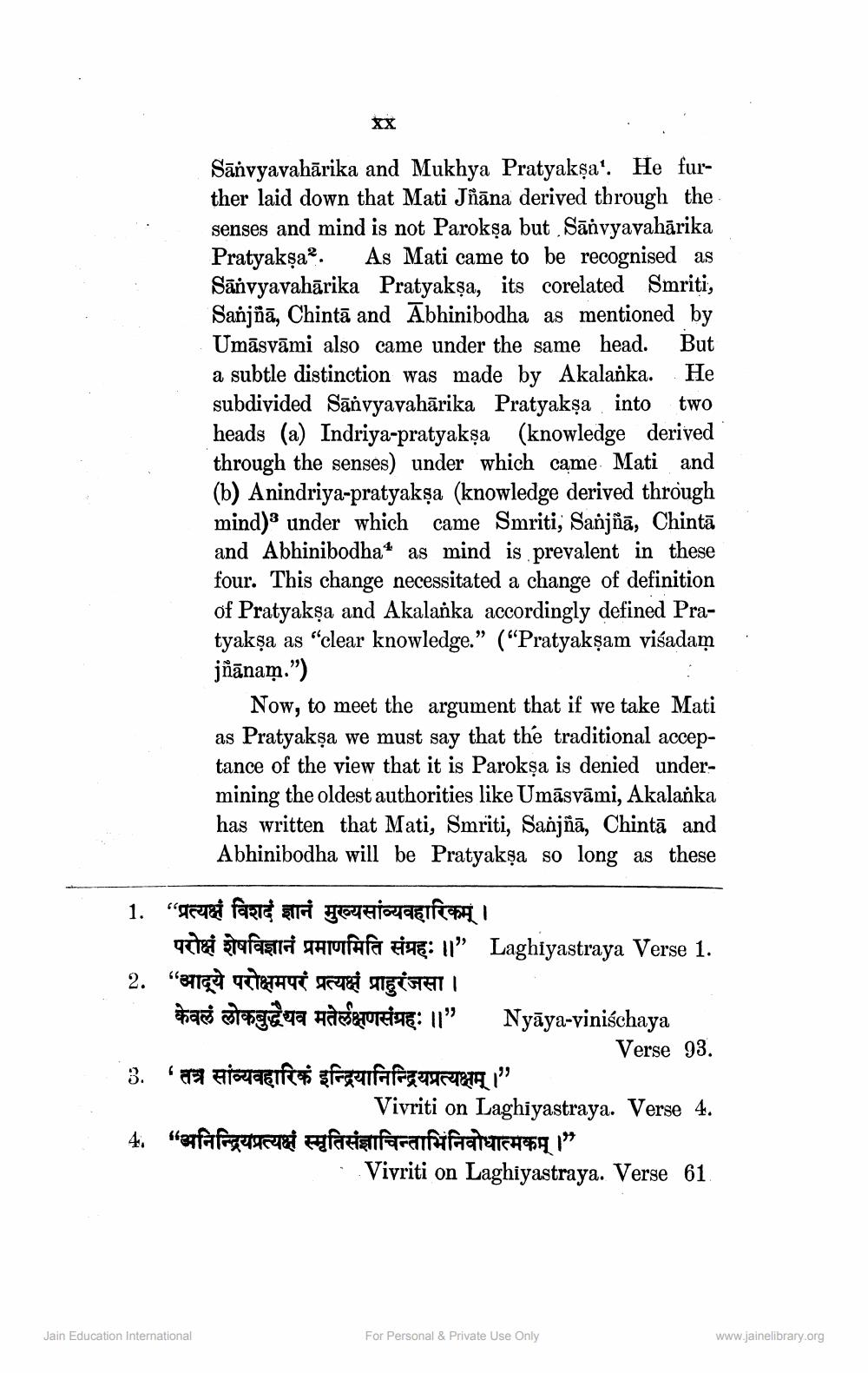________________
XX
Sānvyavahārika and Mukhya Pratyakṣa'. He further laid down that Mati Jñana derived through the senses and mind is not Parokṣa but Sanvyavahārika Pratyakṣa. As Mati came to be recognised as Sanvyavahārika Pratyakṣa, its corelated Smriti, Sanjñā, Chinta and Abhinibodha as mentioned by Umāsvāmi also came under the same head. But a subtle distinction was made by Akalanka. He subdivided Sanvyavahārika Pratyakṣa into two heads (a) Indriya-pratyakṣa (knowledge derived through the senses) under which came Mati and (b) Anindriya-pratyakṣa (knowledge derived through mind) under which came Smriti, Sanjñā, Chinta and Abhinibodha as mind is prevalent in these four. This change necessitated a change of definition of Pratyakṣa and Akalanka accordingly defined Pratyakṣa as "clear knowledge." ("Pratyakşam visadam jñānam.")
Now, to meet the argument that if we take Mati as Pratyakṣa we must say that the traditional acceptance of the view that it is Parokṣa is denied undermining the oldest authorities like Umāsvāmi, Akalanka has written that Mati, Smriti, Sanjñā, Chintā and Abhinibodha will be Pratyakṣa so long as these
1. “प्रत्यक्षं विशदं ज्ञानं मुख्यसांव्यवहारिकम् ।
qi fasci affa :" Laghiyastraya Verse 1. 2. “आये परोक्षमपरं प्रत्यक्षं प्राहुरंजसा ।
केवलं लोकबुद्धेधव मतेर्लक्षणसंग्रहः || ”
Jain Education International
Nyaya-viniśchaya
3. 'तत्र सांव्यवहारिकं इन्द्रियानिन्द्रियप्रत्यक्षम् ।”
4. "अनिन्द्रियप्रत्यक्षं स्मृतिसंज्ञाचिन्ताभिनिवोधात्मकम् ।”
Vivriti on Laghiyastraya. Verse 4.
Verse 93.
Vivriti on Laghiyastraya. Verse 61.
For Personal & Private Use Only
www.jainelibrary.org




